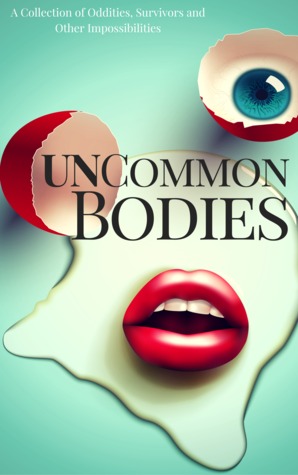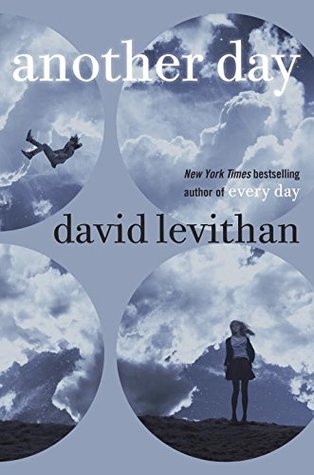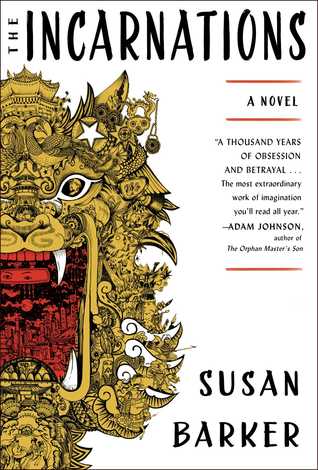I was due to review Stephen Weinstock's novel this week. However due to ill health I have had put that review off until later this year, so in the meantime I invited Stephen to be interviewed instead.
Welcome Stephen to the Magic Realism blog
Thank you, Zoe. I’m so pleased to be invited to be interviewed for the Magic Realism blog. It’s a wonderful site; I loved participating in the bloghop this summer, and have enjoyed reading articles for a couple years. I’m happy to help expand the interview section and hope other like-minded Magic Realism authors will step up and discuss their work.
Who are your favourite magic realist authors and why?
I would break this down into a few categories. There were early influences of mine, before I even knew there was Magic Realism. John Barth’s
Giles Goat-Boy, a plain university coming-of-age novel where the main character is half-boy, half-goat, no questions asked, was a delight to read in college. Discovering that someone like Borges could make fiction out of the wildest of ideas was a liberation. And Flann O’Brien’s
The Third Policeman, which I might call surrealism before MR, has a quality that transcends it all: it’s the only work of fiction I have ever read that had me painfully, speechlessly, and ecstatically unable to continue reading because I was laughing so hard.
Another genre I love is the newly minted Visionary Fiction, and I feel there is a Venn diagram connection between many works in the two genres. Castaneda’s work is a great example, and he started me off understanding the possibility of melding storytelling and higher, esoteric truths.
Finally, there is a set of favorites that represent the Magic Realism most akin to my series, 1001, The Reincarnation Chronicles. In the series, a qaraq, a group of linked souls who have lived through 1001 lifetimes, meet up in the present and recall their past life stories, a la Scheherazade in
The Thousand and One Nights. Audrey Niffenegger’s
Time Traveler’s Wife, with its magical premise and subsequent non-linear narrative in time, was a great inspiration to my laying out a karmic history spanning universes in a complex, non-linear fashion. Salman Rushdie’s
Midnight’s Children affirmed a modern use of
The Thousand and One Nights as fodder for contemporary magic. And Kate Atkinson’s
Life After Life, sits on the nightstand, knowing it will fit in with where my brain is at.
What is your all-time favourite magic realist book?
But my greatest influence is Italo Calvino, and my absolute favorite book is his
Cosmicomics, which follows the main character Qfwfq through his incarnations in the universe. Each story is based on a scientific premise, the ‘realism,’ and is anthropomorphized, its ‘magic.’ So we learn what the universe was like when everything was at a single point, before the Big Bang, and no one could keep a secret. Or follow the last dinosaur in a time when everyone has forgotten who they were. It’s really all magical, because the science is so wondrous. Also, technically speaking, Calvino is part of the French Oulipo school, all about mathematical games, hidden constraints, and word puzzles, but Calvino feels more Magic Realism to me. Since every chapter of my book has someone recall a past life, they are often about inanimate objects or concepts, so I constantly pirate Calvino’s anthropomorphic literary technique.
Can you give us your definition of magic realism?
MR is an oxymoron, and its oxymoronic quality is its simplest pleasure and defining quality. When Marquez started things out with that image of the father unable to recall the names of things, and so every object in the house had a label, he opened up this clash of bizarre and ordinary. What I love about the clash is that it makes you doubt what’s real and what’s magical. Is the father’s condition a true psychological state worthy of Oliver Sacks, and so the whole world is realistic? Or are those banal little signs on furniture and knickknacks enough to decorate a magical location?
I also love how a basic unrealistic premise, like Gregor Samsa waking up as a cockroach, is all you need. The author just accepts it as a given (as will the reader), and then the rest is the realistic consequences of that magical premise. In my series, I assume the soul is immortal and that we live incarnation after incarnation. If a group of people were aware in one lifetime of all their interconnected lifetimes, what would that do to them? How would they assemble their history? How would it change them in their present day ‘realistic’ world? If you and I discovered we fought incessantly as atomic particles in the young, expanding universe, what would happen to our relationship as a therapist and patient in this life?
Tell us about your latest magic realist book?
The first book in my 1001 series is
The Qaraq, the term for the group of linked souls who have shared lifetime after lifetime, and find themselves in suburban New Jersey, with an uncanny memory of their history together. The suburban setting is the realistic backdrop humorously rubbing up against the magical premise of their immortality. They wander into trance state recalling a past life story at children’s birthday parties, shopping at the mall, or in the supermarket freezer section (remembering an Ice Age narrative about a strangler ficus).
In the second book,
The Qaraq and the Maya Factor, due out soon, the group loses their ability to recall the past life tales. This crisis leads them through a series of revelations about how everyday illusion, the Hindu concept of Maya, blocks their extraordinary visions of higher truth. They literally grapple with Realism in order to get the Magic back. The consequences of this struggle are rifts and jealousies and conspiracies within the qaraq. Given its theme of endangered consciousness,
The Qaraq and the Maya Factor is an example of the crossover between Magic Realism and Visionary Fiction.
Why do you write magic realism?
In many fantasy and sci-fi books, the key to the immortality of the soul is often revealed dramatically at the climax of the narrative.
Harry Potter and the Sorcerer’s Stone builds up the mystery forever, which is why we love it, and then reveals the higher truth in the final pages. I like the oxymoronic quality of Magic Realism, the casual assumption from Page One that Gregor is a roach, for it enabled me to accept reincarnation and immortality without any fuss (well, a little in Part One of
The Qaraq), and then carry on into all the myriad psychological and structural consequences of the assumption. What if you knew you were immortal, but still had to get the kids to school? What if you remembered you and your friends’ past lives, even if it meant realizing you had been the sibling of the person you were hitting on at the pub? Would you go mad?
I am also a structure junkie, my main motivation for creating the 1001 series, and this obsession gets back to Magic Realism ultimately. Going back to Calvino and the Oulipo, I love the idea that there are hidden structures or constraints that I have to incorporate in each chapter. There will be 1001 chapters in the series, each with a past life story someone recalls. Within each of these tales, there is a reference to one of the 1001 Nights from that epic. This gets complicated once you understand the history and structure and complexity of
The Thousand and One Nights, but suffice it to say that I have to slip in a magic carpet or a dreaded serpent and make it work organically within the narrative.
There are eleven of these hidden structures woven into the books. Before you call my neighborhood mental health clinic, know that I actually start each chapter by considering these constraints, and they actually help me chart out and provide material for the chapter. But I’ve always loved arcane, puzzle-like forms buried within books, music, or architecture, and I believe this is part of what makes the 1001 series Magic Realism. That blurring of lines between the unreal and the real in this genre corresponds to the blurring of lines between what lies on the surface of the text and what lies beneath. In
The Qaraq and the Maya Factor, it’s about how everyday reality blurs the hidden ways of the world, but also how those hidden truths serve our everyday lives. That’s the fun and the truth of Magic Realism to me.
BIO
In his past life before writing
1001, The Reincarnation Chronicles, Stephen Weinstock created music for theater companies, choreographers, and dance studios (Merce Cunningham, Martha Graham). He has worked as a musician/teacher at UC Berkeley, Princeton, Juilliard, NYU, and the ‘Fame’ school. For years he had the idea of a novel puzzling out an intricate past life history between a group of souls, but only with the epiphany of using the ancient frame tale structures of The Thousand and One Nights did he decide to jump fields. By day he still bring dancers to ecstasy with his improvisations, but at night he enters the world of metempsychosis, time-honored storytelling, and worlds ranging from historical fiction to romantic fantasy.
See more of Stephen’s work, and the 1001 series, on his website.
http://www.qaraqbooks.com
Join the free email service 1001/Qaraqbooks News, and find out when
The Qaraq and the Maya Factor comes out, including a free giveaway:
http://www.qaraqbooks.com/subscribe














